Are you an undergraduate student interested in research, but unsure of which field?
The SAC is excited to be launching The Physics Hour, a new lecture series featuring professors, researchers, and industry professionals in Canadian labs who want to share their work with students and physics enthusiasts. This virtual series will be hosted online every Tuesday at 6:30 pm EST (3:30 pm PST) over Zoom and will include a short Q&A so the audience can connect with speakers.
We are inviting experts across a wide range of fields including astrophysics, condensed matter physics, medical physics, and more! This is an excellent opportunity for undergraduate students to become familiar with a wide range of physics fields and ask questions directly to experts in the field about their research and how to succeed in this career path. The Physics Hour series includes special features which will spotlight Canadian professionals who have taken their physics and science expertise to industries such as science communications, software development, and beyond!
Whether you’re just starting your undergraduate degree, looking to pursue a graduate program, or applying to jobs in industry, The Physics Hour provides an opportunity for you to learn about physics and connect with the professionals.
See the schedule below to see who will be presenting next, register for the lecture through the zoom forms, and find recorded sessions on our Youtube channel. Stay up to date with this series and all SAC activities by following us on our social media accounts!
Know a great speaker who should be featured? Contact us using our webform and we’ll be in contact with you shortly!
Randy Lewis – Using quantum computers to simulate elementary particles
Tuesday, July 19th
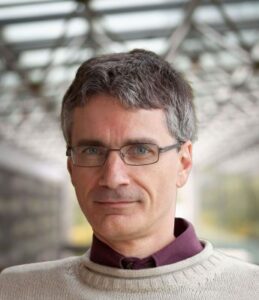 Professor Randy Lewis uses computational methods to study elementary particles, especially the strong interactions among quarks and gluons in cases where numerical methods are the only rigorous option. For an introductory discussion of quarks, tetraquarks and dark matter quarks, see Professor Lewis’s lecture here.
Professor Randy Lewis uses computational methods to study elementary particles, especially the strong interactions among quarks and gluons in cases where numerical methods are the only rigorous option. For an introductory discussion of quarks, tetraquarks and dark matter quarks, see Professor Lewis’s lecture here.
Quantum computers are small and experimental today, but they might become a powerful new tool for studying elementary particles. To hear what some students and Professor Lewis has been calculating with quantum computers, come to the seminar on July 19!
For further information, please visit his personal website here.
Aaron Vincent – If you’ve a problem and you know it, Monte Carlo: Finding dark matter in the Sun with random walks
Tuesday, July 26th
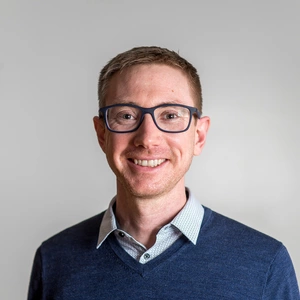
Professor Aaron Vincent is a theoretical astroparticle physicist and member of the Arthur B. McDonald Canadian Astroparticle Physics Research Institute, as well as the Queen’s Astronomy Research Group, in the Department of Physics, Engineering Physics and Astronomy at Queen’s University.
His research encompasses many aspects of astroparticle phenomenology and cosmology, with emphasis on the particle nature of dark matter, and the search for novel ways to identify it. In particular, he is interested in the effects of dark matter on stars like the Sun, along with its interactions with other messengers including neutrinos and the cosmic microwave background. His work on extra dimensions has inspired some of the pieces featured in the art exhibit Drift: Art and Dark Matter hosted at the University of Toronto’s Art Museum with the online exhibit hosted on Agnes. To hear about Professor Vincent’s research, come to the seminar on July 26!
For further information, please visit his personal website here.
Lindsay Leblanc – Exploring quantum technologies with atoms
Tuesday, August 2nd
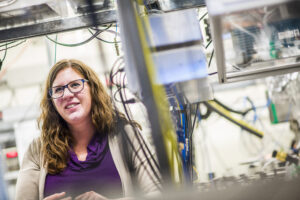
Professor LeBlanc’s Ultracold Quantum Gases Laboratory focuses on fundamental research and practical applications using atomic physics techniques, leveraging the interactions between light and matter. Using precision laser systems, custom electronics, and ultrahigh vacuum systems, the team is engaged in a variety of research topics related to quantum computing, quantum memory, and quantum communications. To hear about Professor LeBlanc’s research, come to the seminar on August 2! For further information, please visit her website here.
Jess McIver – Gravitational-wave astrophysics: a new frontier
Tuesday, August 9th

Gravitational waves, tiny ripples in the fabric of spacetime, have revolutionized what we know about dead stars, general relativity in extreme spacetime, and the formation of heavy elements in the Universe. Professor McIver’s research interests include multi-messenger astrophysics with gravitational waves from black holes, neutron stars, and core-collapse supernovae using detectors on Earth (like LIGO) as well as in space (like LISA). They are also active in data science, machine learning, and characterization of large-scale physics experiment instrumentation. To hear about Professor McIver’s research, come to the seminar on August 9! For further information, please visit their website here.
Lisa Dang – Observing the Climate of Distant Worlds with Infrared Space Telescopes
Tuesday, August 16th
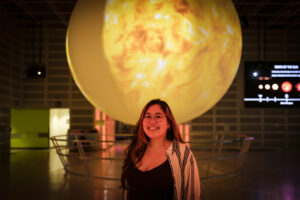
Lisa Dang is a recent PhD graduate from McGill University and will soon join the Institute for Research on Exoplanets at Université de Montréal as a postdoctoral fellow. During her graduate degree, she also held a research position at the NASA Spitzer Science Center at Caltech in Pasadena.
Before the exoplanets era, the architecture of the Solar System’s planets has long been the primary inspiration for planet formation and evolution theories. Lisa studies a variety of exoplanets vastly different from our Solar System planets and characterizes their climate with a space-based observatory, most excitingly with the recently launched JWST. She hopes to understand how planets form and evolve to ultimately put our Solar System in context.
To hear about Dr. Dang’s research, come to the seminar on August 16! For further information, please visit her website here.
Patrick Desrosiers – Complexité et simplicité des réseaux de neurones
Mardi, 23 Août

Patrick Desrosiers est un physicien mathématicien qui s’intéresse aux systèmes complexes et tout particulièrement au cerveau. Il cherche entre autres à élucider le problème de la résilience des réseaux de neurones, c’est-à-dire leur capacité à récupérer leur état normal après une perturbation importante (p. ex. pertes de connexions entre les neurones ou surcharge d’influx électriques). Pour y parvenir, son équipe et lui ont développé des méthodes efficaces de réduction dimensionnelle qui s’inspirent de la théorie des graphes et de plusieurs outils mathématiques couramment utilisés en physique, dont le spectre des matrices.
Depuis 2014, Patrick Desrosiers est chercheur au Centre de recherche CERVO et professeur associé au Département de physique, de génie physique et d’optique de l’Université Laval. Il co-dirige le laboratoire de recherche Dynamica, affilié au Centre interdisciplinaire en modélisation mathématique de l’Université Laval.
Pour entendre parler de la recherche du professeur Desrosiers, venez au séminaire le 23 août!
Renée Hložek – The Big, Dark and Beautiful Universe
Tuesday, August 30th

We are living in an incredible time in the life of the universe, where we can see stars and galaxies in the night sky, and also measure how the universe is expanding! Dr. Renée Hložek will talk about what the universe is made of including dark energy and dark matter, how they shape how our universe as it evolves with time and how the structures we see around us were seeded from quantum fluctuations billions of years ago. She will discuss how observations of the sky at different wavelengths of light tell us about different properties of the universe – and some of the amazing telescopes we are building to unlock the mysteries of the cosmos.
Renée is an Associate Professor at the Dunlap Institute and the David A Dunlap Department of Astronomy and Astrophysics at University of Toronto. She was born in Pretoria, South Africa where she also did her undergraduate degree. She completed her Masters at the University of Cape Town, South Africa before moving to the UK in 2008 as a South African Rhodes Scholar. After four years as the Lyman Spitzer Postdoctoral Fellow at Princeton University, she moved to Toronto in 2016. Her work uses data from telescopes around the world to test the predictions of novel cosmological theories about our universe, how it started, what it contains and how it will end.
To hear about Dr. Hložek’s research, come to the seminar on August 30! For further information, please visit her website here.
Ben Newling – Magnetic resonance imaging in materials science: tricky techniques for awkward situations
Tuesday, September 6th

Magnetic resonance imaging (MRI) is non-invasive and non-optical, which has cemented its usefulness as a tool in clinical medicine. Careful manipulation of the nuclear spins can make MRI sensitive to a variety of physicochemical parameters such as temperature, chemical potential or displacement. These features make MRI a powerful measurement method in materials science. However, MRI signals in most materials are shorter-lived than in the clinic and more difficult to measure. The UNB MRI Centre develops new MRI methods for use in awkward materials in the lab and in the field, from catalysts to chocolate, from sea ice to maple sap.
To hear about Dr. Newling’s research, come to the seminar on September 6!
[CANCELLED] Cornelia Hoehr – How nuclear physics can treat cancer
Tuesday, September 13th
Physics and especially nuclear physics has 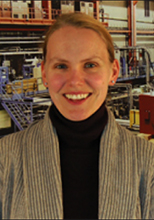 always played a direct and indirect role in medicine as very early on scientists realized the potential of radiation in medicine. My research focuses on two main areas where radiation is implemented: Proton Therapy dosimetry and Novel isotopes for nuclear medicine.
always played a direct and indirect role in medicine as very early on scientists realized the potential of radiation in medicine. My research focuses on two main areas where radiation is implemented: Proton Therapy dosimetry and Novel isotopes for nuclear medicine.
TRIUMF operated Canada’s only Proton Therapy centre from 1995 until 2019 and is actively pursuing Proton Therapy research. Cancer treatment with protons takes full advantage of their superior dose deposition versus the traditional treatment with high energy photons. This allows the healthy tissue around the tumor to be spared from excessive harm while destroying the cancer cells, resulting in a very successful cancer treatment. I am investigating ways to improve Proton Therapy even further by investigating novel detectors for dosimetry, treatment monitoring via novel ways of proton range verification, and the use of proton FLASH.
Nuclear imaging and Targeted Radioisotope Therapy (TRT) uses radioactive isotopes to diagnose and treat diseases like cancer. We are researching and developing methods to produce existing and novel medical radioisotopes. This work concentrates on the targets used at medical cyclotrons and spans the fields of engineering, physics and chemistry.
To hear about Dr. Hoer’s research, come to the seminar on September 13!
Daniel Côté – Physique, optique et neuroscience, vraiment?
Mardi, 20 Septembre
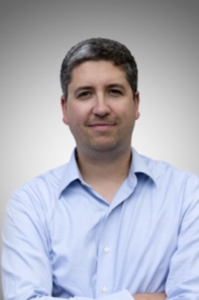 La neuroscience exige de repousser la limite de ce que la physique permet en regardant des groupes de neurones minuscules qui déchargent rapidement, tout en étant connectés entre eux sur des grandes distances. Notre groupe de recherche utilise la photonique pour développer des nouveaux outils pour voir — et même contrôler — les neurones dans les êtres vivants, et décoder les mystères du cerveau.
La neuroscience exige de repousser la limite de ce que la physique permet en regardant des groupes de neurones minuscules qui déchargent rapidement, tout en étant connectés entre eux sur des grandes distances. Notre groupe de recherche utilise la photonique pour développer des nouveaux outils pour voir — et même contrôler — les neurones dans les êtres vivants, et décoder les mystères du cerveau.
Pour entendre parler de la recherche du professeur Côté, venez au séminaire le 20 septembre!
Valery Milner – Spinning quantum objects in a laser centrifuge
September 27th, 2022
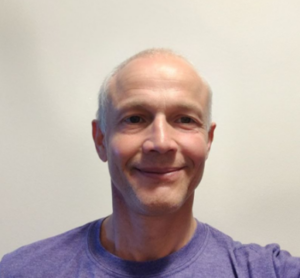 Valery Milner investigates quantum “weirdness”, such as superfluidity in liquid helium, using ultrashort laser pulses. His research group taylors the pulses to a very unique shape, known as an “optical centrifuge”, which enables them to spin molecules inside the quantum system of interest. The reaction of the system to the molecular rotation provides them with new information about the quantum world at the molecular nano-scale.
Valery Milner investigates quantum “weirdness”, such as superfluidity in liquid helium, using ultrashort laser pulses. His research group taylors the pulses to a very unique shape, known as an “optical centrifuge”, which enables them to spin molecules inside the quantum system of interest. The reaction of the system to the molecular rotation provides them with new information about the quantum world at the molecular nano-scale.
To hear about Dr. Milner’s research, come to the seminar on September 27! For further information, please visit his research website here.
Valerie Booth – Biophysics – what you do when you can’t decide what kind of scientist you want to be when you grow up.
Tuesday, October 4th
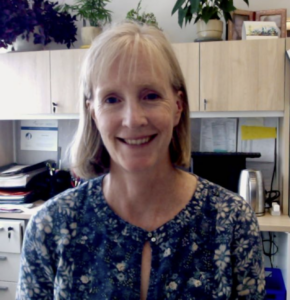 Biophysics involves applying physics ideas and techniques to biological and medical problems. There is a huge variety in the types of projects that biophysicists take on. Prof. Valerie Booth’s group uses physics, biochemistry and computational techniques to: 1) develop novel antibiotics to help address the growing problem of microbial resistance to our current drugs; 2) learn how the biomolecular machines inside cells continue to operate even though their environment is jam-packed full of other molecules, i.e. very crowded; 3) figure out how lung surfactant, the mixture that coats the inside of all our lungs, helps reduce the surface tension in alveoli and prevents our lungs from collapsing.
Biophysics involves applying physics ideas and techniques to biological and medical problems. There is a huge variety in the types of projects that biophysicists take on. Prof. Valerie Booth’s group uses physics, biochemistry and computational techniques to: 1) develop novel antibiotics to help address the growing problem of microbial resistance to our current drugs; 2) learn how the biomolecular machines inside cells continue to operate even though their environment is jam-packed full of other molecules, i.e. very crowded; 3) figure out how lung surfactant, the mixture that coats the inside of all our lungs, helps reduce the surface tension in alveoli and prevents our lungs from collapsing.
To hear about Dr. Booth’s research, come to the seminar on October 4!
